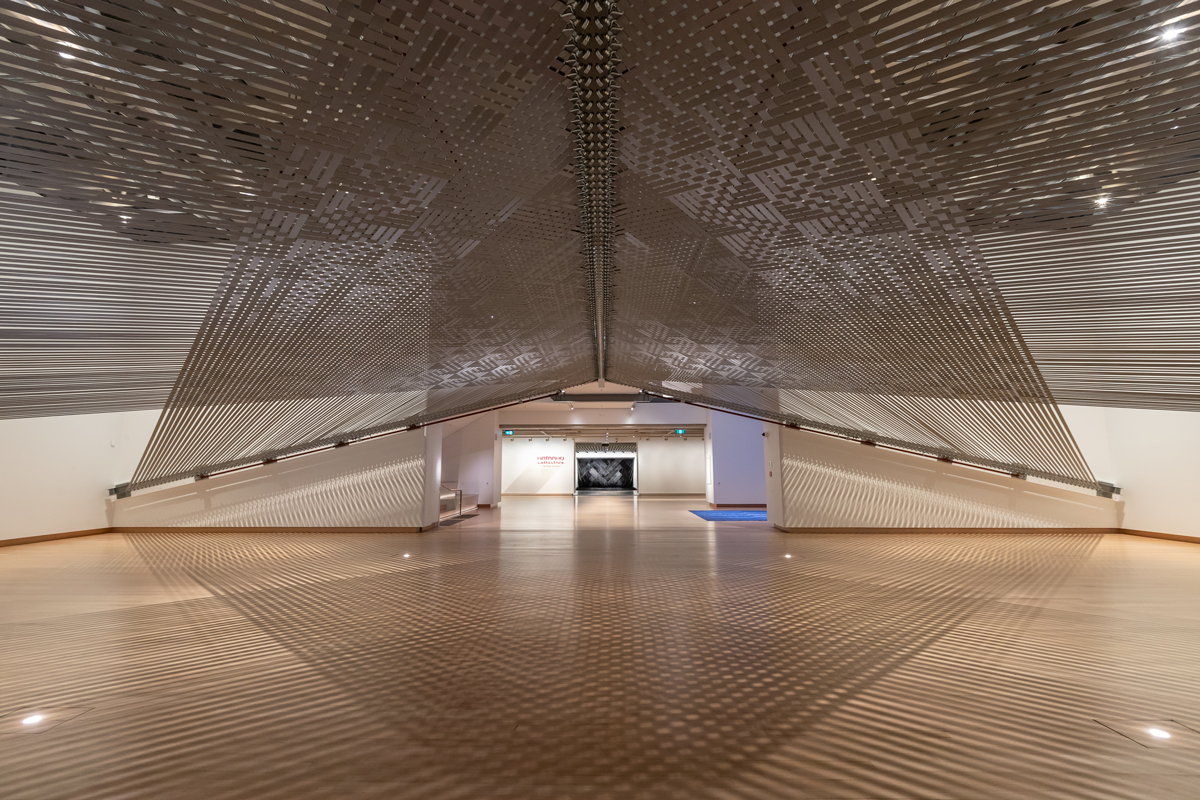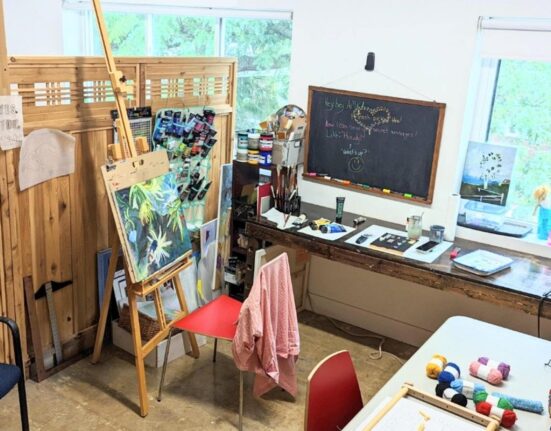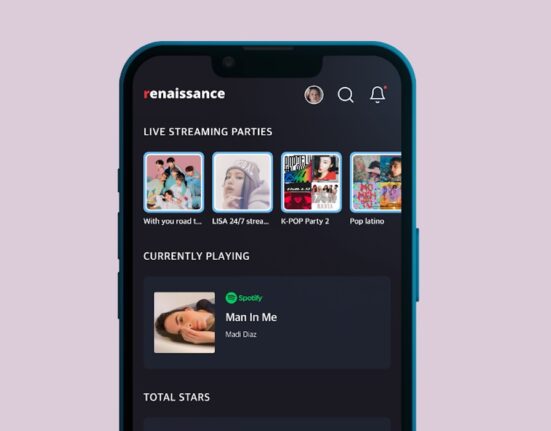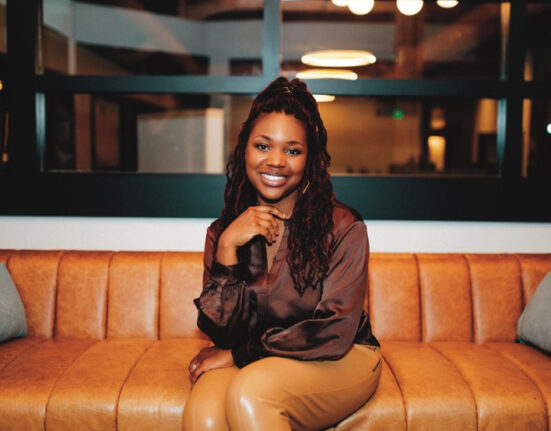
Photo Anna Shtraus/©Dana Awartani/Courtesy the Artist and Athr Gallery
On Wednesday during a press conference, Adriano Pedrosa announced the exceptionally large artist list for the upcoming Venice Biennale, for which he serves as curator.
Taking the theme of “Stranieri Ovunque – Foreigners Everywhere,” Pedrosa, who is also artistic director of the Museu de Arte de São Paulo and the first Latin American to organize the Biennale’s main exhibition, said the 2024 edition speaks to “a world rife with multifarious crises concerning the movement and existence of people across countries, nations, territories, and borders, which reflect, in turn, the perils and pitfalls of language, translation, nationality, expressing differences and disparities conditioned by race, identity, nationality, gender, sexuality, freedom, and wealth.”
ARTnews crunched some of the numbers of the artist list for the 2024 Venice Biennale, which opens in April.
331. The official number of participating artists in the 2024 Venice Biennale. However, included in this count are a number of collectives, so the total participant number is likely well over 400.
112. That’s how many artists will be included in the “Nucleo Storico” portion of the Biennale, which focuses on modernisms from the Global South and will include work produced between 1905 and 1990. Per Pedrosa, each artist will be represented by one work here.
39. The number of artists and collectives participating in a special section within the main exhibition dedicated to the Disobedience Archive, a video project founded by Milan-based curator Marco Scotini in 2005. (The Biennale did not provide official birth dates and geographical location for these artists, as such they are not tabulated within the following data.)
4.67. That’s how many times larger this year’s Venice Biennale is than this year’s Whitney Biennial, which opens the month before and includes 69 artists and 2 collectives. While international biennials have been known to have a crossover of artists, these two share just 1 artist, Chilean artist Seba Calfuqueo, who features in the Biennale’s Disobedience Archive.
8 and 12. The number of collectives or artist duos in the main exhibition and the Disobedience Archive section, respectively. In the former group, those include MAHKU, Superflex, Mataaho Collective, and Claire Fontaine, while the latter group has Black Audio-Film Collective, Critical Art Ensemble, Pilot TV Collective, and Queerocracy.

Rosa Elena Curruchich, Van a escoger capitana del nuevo año, ca. 1980.
Photo Margo Porres/Courtesy Proyectos Ultravioleta, Guatemala City
1924. That’s the year the oldest living participant, Montevideo-based Italian artist Linda Kohen, was born, meaning she is set to turn 100 this year. Six other deceased artists were born in 1924: Inji Efflatoun, Ram Kumar, Bertina Lopes, Francis Newton Souza, Armodio Tamayo, and Horacio Torres.
Speaking of elder living artists, this edition includes 24 artists born before the end of World War II, meaning they would be in their 80s and above. Among these are Zilia Sánchez (b. 1926), Ahmed Morsi (1930), Claudia Andujar (1931), Olga De Amaral (1932), Kay WalkingStick (1935), Abel Rodríguez Cahuinarí (1941), and Simone Forti (1935), as well as both winners of this year’s Golden Lion for Lifetime Achievement, Nil Yalter (1938) and Anna Maria Maiolino (1942). (Forti was the winner of the Golden Lion for Lifetime Achievement from the Venice Dance Biennale in 2023.)
181. The number of deceased artists (as of January 31, 2024), which is around 55 percent of the official artist list. Of those deceased artists, 47 were born in the 19th century, with Eliseu Visconti, who was born in Italy in 1866 and died in Brazil in 1944, being the oldest. (Two artists, Juana Elena Diz and Ester Pilon, have unknown death dates.)
28. While many of the deceased artists lived long lives, including Saloua Raouda Choucair who died six months before her 101st birthday, Hungarian-Indian painter Amrita Sher-Gil was only 28 when she died in 1941 of an unknown illness just before the opening of her first major solo show in Lahore.
1998 is the birth year for the Biennale’s youngest participant, Beirut-born, Montreal-based Joyce Joumaa, who will turn 26 this year and is included via the Biennale College Arte initiative. The youngest artists participating not via the Biennale College Arte initiative are Nour Jaouda and River Claure, both born in 1997. Together, these 3 artists are the only Gen Z participants, per the Pew Research Center, which starts the generation at 1997.
On the other hand, millennials, born between 1981 and 1996 per Pew, have a robust showing in the Biennale, with 40 artists set to show their work. Among those in the cohort are Salman Toor (b. 1983), Leilah Babirye (1985), WangShui (1986) Bárbara Sánchez-Kane (1987), Lauren Halsey (1987), Jade Guanaro Kuriki-Olivo aka Puppies Puppies (1989), Rindon Johnson (1990), Ana Segovia (1991), Lydia Ourahmane (1992), and Louis Fratino (1993).

Mataaho Collective, Takapau, 2022, installation view.
Photo Maarten Holl/Courtesy Te Papa
Geographically, the exhibiting artists have ties to at least 69 countries. With the Biennale’s focus on “Foreigners Everywhere,” determining a given artist’s nationality can be tricky business given that numerous artists were born in one country and died or are currently based in another. (That also doesn’t take into account whether or not they spent significant time in a country not currently listed on their CVs.)
With its focus on artists born or working in the Global South, this breaks down into 12 countries from East Asia, South Asia, and Oceania, like China, Sri Lanka, the Philippines, and New Zealand; 11 countries from North Africa and the Middle East, including Egypt, Palestine, and Saudi Arabia; 9 countries from Sub-Saharan Africa, including Nigeria, Angola, and South Africa; 2 territories, Hong Kong and Puerto Rico; and 17 countries from Europe, including the UK, Italy, France, and the former Czechoslovakia.
Looking specifically at Latin America, as Pedrosa is the first Biennale curator to come from this region, the exhibition includes artists with ties to 16 countries in Latin America and the Caribbean, such as Mexico, Guatemala, Argentina, Uruguay, Cuba, and Haiti. Within that region, 57 deceased artists and 28 living artists have ties to Latin American or Caribbean countries.
30 artists have ties specifically to Brazil, Pedrosa’s home country. Of those 7 are living artists and 1 collective, MAHKU, founded in 2013 by Indigenous Huni Kuin artists; 2 additional Indigenous Brazilian artists, Joseca Mokahesi Yanomami and André Taniki Yanomami, are also included. Of the deceased artists, 9 were born abroad.
Similarly, Pedrosa’s list features 3 US-based Latinx artists, including Beatriz Cortez, Pablo Delano, and Fanny Sanín, as well as 2 who are recently deceased, Carmen Herrera and Freddy Rodríguez. On the historical side are 4 artists who would today likely be considered Latinx: Alfredo Ramos Martinez (1871–1946), Rosa Rolanda (1896–1970), Oswaldo Guayasamín (1919–1999), and Kazuya Sakai (1927–2001); Martinez, Guayasamín, and Sakai were born in Mexico, Ecuador, and Argentina, respectively, and died in the US. Rolanda was born in the US and died in Mexico. (These four artists were also included in the above figures for Latin America.)
19 artists in this edition are currently based in the United States, while 9 artists died in the US (all of whom were born in different countries). Additionally, 2 artists, Rindon Johnson and Dean Sameshima, were both born in California but are now based in Berlin. Among the living artists are 2 Native American artists, Kay WalkingStick and Emmi Whitehorse.






